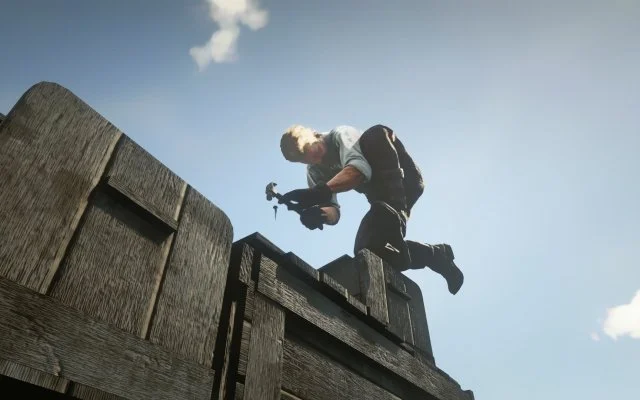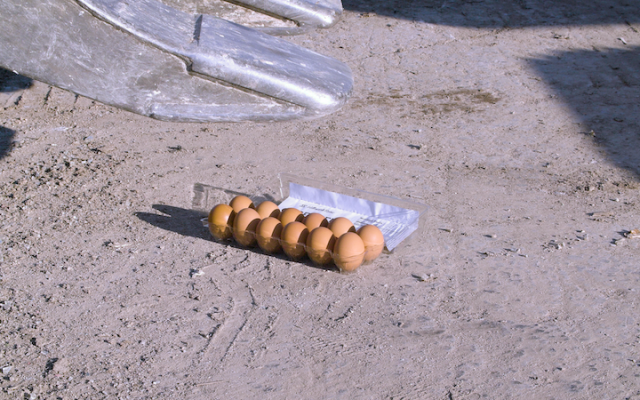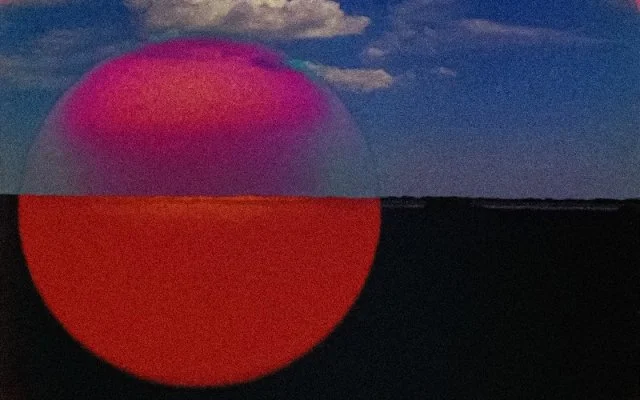Memorable images, moments, qualities, techniques and scenes from the 2023 instalment of 25 FPS.
Sunspots (Yannick Mosimann, 2022). Image courtesy of the artist
When Daniel Kasman covered the Locarno Festival on Notebook in 2017 he hit upon a great way of engaging with standout work. In his introduction, he explained that he would be “looking for specific images, moments, techniques, qualities or scenes…that grabbed me and have lingered past and beyond the next movie seen, whose characters, story and images have already begun to overwrite those that came just before.” This seemed like a great way to engage with the creative work in a milieu like a festival - to concentrate on that which lingers rather than attempting to highlight everything. As such, we’ve shamelessly pilfered this very technique for the ALT/KINO festival reports.
On this occasion, Patrick Gamble went in search of memorable ideas and moments from this year’s edition of 25FPS.
The Angel of Forms (Rushnan Jaleel, 2023). Image courtesy of 25FPS.
The hidden meaning of wet dreams in Rushnan Jaleel’s The Angel of Forms.
An attempt to chart the dreams of the mythological water nymph Ondine, Rushnan Jaleel’s debut is a mesmerising collage of aqueous images. Composed of nocturnal shots of water sourced from various locations, the film is almost entirely consumed by dark negative spaces, with the viewer’s eye drawn to the few salient bursts of colour that seep into the frame. Sounds, images, faces, thoughts, ghostly landscapes are all reflected on the water’s surface, and the viewer is always on the hunt to rescue them from falling into oblivion. An aquatic pareidolia, The Angel of Forms makes for a profound viewing experience, but relies entirely on the viewer’s willingness to dive into their subconscious and confront what's lurking below the surface.
The architecture of grief in Brecht De Cock’s artifacts of you, artifacts of me.
In Brecht De Cock’s expanded animation, grief becomes a house with no windows or doors and no way of turning back the clock. Created in response to the sudden and unexpected loss of his father, De Cock uses a combination of photogrammetry, 3D animation, live-action footage and digital effects to bring to life the memories of that evening, and how it felt returning to his childhood home. The result is an intensely personal film that feels like a horror movie with all the horror drained from it. A nightmarish scenario transformed into a dreamlike mist of images, De Cock ultimately fails to re-animate the night his father died with any form of clarity, but in the process he has created a poignant portrait of the intrusive waves of thought that sweep in out of nowhere when you lose a loved one.
artifacts of you, artifacts of me (Brecht De Cock, 2022). Image courtesy of 25FPS.
Cave Painting (Siegfried A. Fruhauf, 2023). Image courtesy of 25FPS.
The human desire to leave a mark in Siegfried A. Fruhauf’s Cave Painting.
As far as we know, humans are the only species on the planet who feel the need to accumulate memory outside their brains. From cave paintings to cinema, art has long been used as a way to observe, remember and to say; “I exist”. This desire to leave a mark on the world is explored in Siegfried Fruhauf’s latest, a mesmerising spelunking expedition through time; taking the audience from the dawn of human self-consciousness to the death of celluloid. There’s a peculiar magic to Fruhauf’s work, and the way he stitches images of cave paintings together to create the illusion of movement has an incantatory effect; no more so than when we see the first outline of a human hand. The scientist Jacob Bronowski believes that these handprints were an attempt by our ancestors to say “'This is my mark. This is man,” and when the first of these human hands emerges from the screen it feels like witnessing the precise moment the modern human mind was born
Capitalist realism in Total Refusal’s Hardly Working.
An ethnographic exploration of the working lives of NPCs (non-player characters) in the 2018 Western game Red Dead Redemption 2, Total Refusal’s latest work explores the corrupt mechanics of capitalism by revealing the extent to which attitudes to work have become ingrained in our culture. From a carpenter who hammers over 100 nails into the same pier across an 11-hour workday, to the street sweeper who meticulously brushes the same stretch of path, the film depicts how the relentless rhythms and mind-crushingly repetitive nature of work have been replicated in the games we play, with these NPCs trapped in an infinite loop of labour performance. By revealing how games like Red Dead Redemption reinforce the basic capitalist method of production and exchange, Hardly Working demonstrates how work has become a tool for maintaining social order. However, the film offers a glimmer of hope through the often unintentionally funny glitches that occur in open world games, and hints at how idleness could become a new form of rebellion.
Hardly Working (Total Refusal, 2023). Image courtesy of 25FPS.
Measuring 500 Feet (Abigail He, 2022). Image courtesy of 25FPS.
The absence of images in Abigail He’s Measuring 500 Feet.
A 14 minute film, consisting of a single reel of blank celluloid unspooling until it reaches its final frame, Abigail He’s Measuring 500 Feet initially feels like some kind of cruel prank. Indeed, if it wasn’t for the sound of the projector whirling in the background, you’d be mistaken for thinking that an error had occurred. However, He’s work often explores the interchangeable relationships between presence and absence and the film’s lack of images is intentional. Engaging with the mechanics of cinema, the sound of the film running past the projector’s bulb makes it feel like being in an elevator slowly descending down a mineshaft towards the centre of the Earth and, as we sit in the dark we’re forced to reconsider our perception of cinema and reflect on the significance of the images we are shown. When we reach the conclusion of the reel and find ourselves presented with the piercing light of the projector it’s hard not to think about Hollis Frampton's performance piece ‘A Lecture,’ in which the avant-garde filmmaker explored the conflict between representation and illumination. During the performance, Frampton describes the white rectangle of light offered by the projector as "containing everything”, with He’s latest ultimately an opportunity to ponder not what cinema represents, but what it chooses to exclude.
How to construct a fairer household in Jessi Ali Lin and Hsin-Yu Chen’s Semiotics of the Home
Completed as part of a series of video projects at RAIR Philly, a non-profit arts organisation situated within a construction and demolition recycling centre in northeast Philadelphia, Jessi Ali Lin and Hsin-Yu Chen’s Semiotics of the Home is a light-hearted play on Martha Rosler’s ‘Semiotics of the Kitchen’. In 1975, Rosler set out to critique the commodification of traditional female roles in modern society with a parody of television cooking shows, but instead of taking centre stage themselves, the pair film construction machinery as it performs domestic chores like cooking, cleaning and hoovering. Some of these performances are genuinely funny, like a forklift truck ironing a shirt or a bulldozer listening to music. Meanwhile others, like the cracking of eggs by an excavator are fuelled by an unspoken rage. Reframing the domestic space by turning their camera on the machines used to construct it, the pair cleverly draw attention to the gendered nature of domestic work and encourage us to reconsider the invisible labour that occurs in the spaces we call home.
Semiotics of the Home (Jessi Ali Lin, Hsin-Yu Chen, 2023). Image courtesy of 25FPS.
Sunspots (Yannick Mosimann, 2022). Image courtesy of 25FPS.
Staring at the sun in Yannick Mosimann’s Sunspots
As children, we're taught to never stare directly at the sun, but that’s almost impossible in Yannick Mosimann’s latest. We observe as 16mm shots of the solar surface interact with images of the earth below to create an otherworldly landscape. These effigies of a dying sun, overlapping images of a burning planet, shot on eroding film stock are accompanied by the roar of volcanoes and sounds recorded by the Solar and Heliospheric Observatory (SOHO). In fact, Sunspots feels as much like an act of scientific inquiry as it does an intricately choreographed attempt to draw out the Earth’s poetic force, with these sounds conjuring everything about the landscape that is beyond our visual perception. Taking an interplanetary perspective of the present and inviting us to question the ethics that drive our current moment, Sunspots goes some way to recreating the ineffable condition of living in a time in which apocalyptic precarity feels inevitable.
The 2023 edition of 25FPS ran from 27-30 September
Patrick Gamble is a writer on film and culture, whose work has featured on Hyperallergic, BFI, Calvert Journal and Kinoscope. Further links to his writing can be found at patrickgamble.contently.com.








